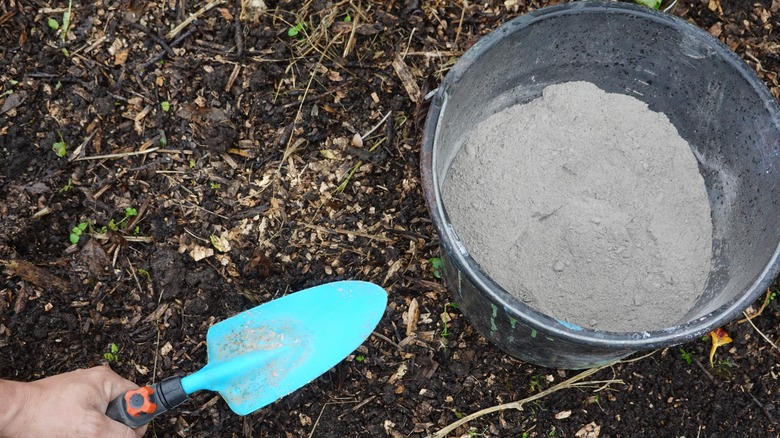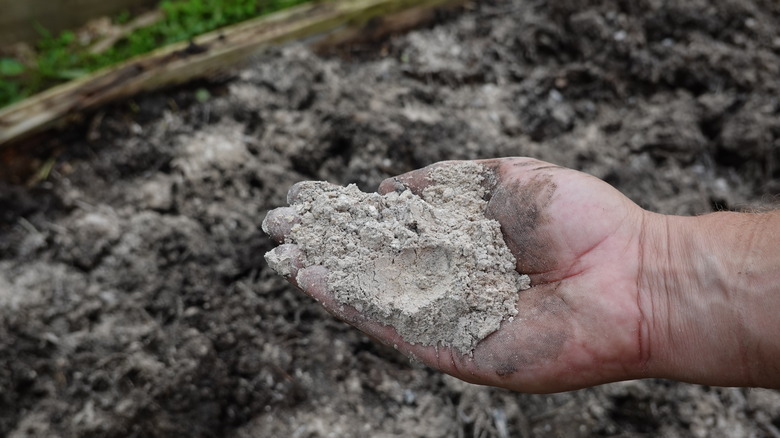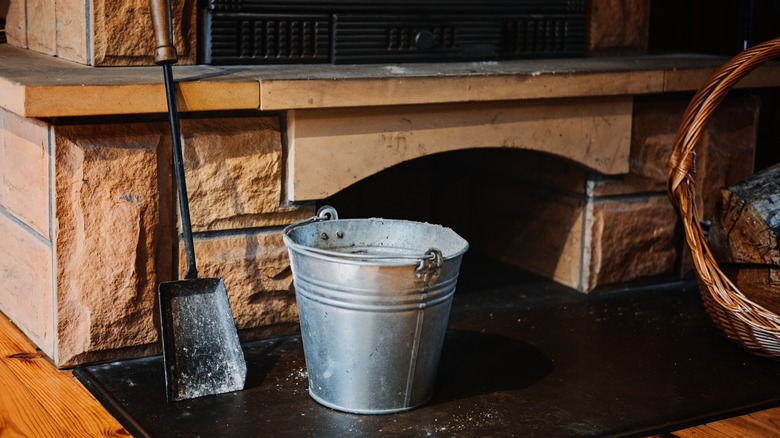Why Do Gardeners Use Wood Ash As A Fruit Tree Fertilizer And Should You Try It?
Did you know that using wood ash as a fruit tree fertilizer is a practice that gardeners have been doing for many years? This is because the wood ash is good for the soil, and can provide valuable nutrients to the trees and help promote fruiting. So, if you have a fireplace in your home, you should definitely try this for yourself and use the ash accumulated from the burned wood as a beneficial addition to the garden soil around your fruit trees. But, keep in mind that the ashes will raise the soil's pH level, so you should do a soil test first to ensure that it won't become too alkaline after you add the ash. At the same time, wood ashes will produce faster results than lime, so they can be quite useful if your soil is highly acidic and needs fairly quick amendment.
It's also important to consider the type of wood you're burning before using the ash around your fruit trees as some can be more helpful than others. As a bonus, using the ash sparingly around your fruit trees has the benefit of applying an organic fertilizer that's completely free and a great way of repurposing an otherwise waste product.
What benefits can be derived from using wood ash around your fruit trees?
Wood ash is an organic material, as it's just the waste that remains after wood has been burned. As the wood burns, it releases both nitrogen and sulfur as a gas. What remains are important nutrients, such as potassium in the form of potassium bicarbonate, calcium, magnesium, and phosphorus. The ash also contains small traces of micronutrients, such as manganese, iron, zinc, and boron. The potassium contained in wood ashes is particularly useful in strengthening the growth of your fruit trees, and will help increase fruit production and ripening. As a bonus, wood ash is also one of a number of DIY tomato fertilizers that will help your plants thrive.
The ash from your fireplace can also be beneficial when you have very acidic soils, because it can be used instead of lime to make your soils more alkaline. As these ashes can act faster than lime to raise the pH level, they can be applied in the spring when needed. But it should be noted that wood ash only has about 50% of acid-neutralizing ability compared to lime. This can actually be a good thing if you only need to increase the pH slightly, as long as you don't add too much ash too often. For example, if you've done a soil test and it recommends that you apply 10 pounds of lime, you can add around 20 pounds of wood ash to get the same result.
Precautions to consider when applying wood ash around your fruit trees
Before you go and apply the ash from your fireplace or wood burning stove to the soil around your fruit trees, bear in mind that the type of wood the ash comes from is important, as some ash may contain heavy metals. Make sure that the wood you're burning comes from a reliable source, and from trees that are growing in natural areas, rather than from those grown in contaminated soils or close to industrial estates. You should also be aware that ash from hardwoods contains more valuable nutrients than ashes produced from burning softwoods, such as pine. Plus, it's important to think twice before using wood ash as a fertilizer around any of your plants that prefer more acidic soil.
When applying spent ashes around your fruit trees, try to add them on a still day, as the wind can easily blow their very fine particles around. You should also make sure that the soil is moist before you add the ash to help keep it in place and stop it from blowing all over your yard. Plus, you want to limit the amount of ash you add to no more than around 20 pounds per 1,000 square feet of soil annually, and make sure you test the soil regularly to ensure an optimum pH level. Finally, as wood ash does not contain nitrogen, it shouldn't be the only type of fertilizer you use around your fruit trees.


